 |
 |
 |
| |
Life Expectancy With HIV Improving--But
Added Years Often Not Healthy
|
| |
| |
CROI 2020, March 8-11, 2020, Boston
Mark Mascolini
In one large US healthcare system, HIV-positive people who started antiretroviral therapy (ART) at a high CD4 count now live as long as HIV-negative people [1]. But the HIV cohort lives "substantially fewer healthy years than people without HIV," regardless of early ART.
A decade ago people with HIV in the Kaiser Permanente healthcare system lagged their HIV-negative counterparts by 13 years in life expectancy [2]. But that gap shrunk to 9 years among HIV-positive people who started ART with a CD4 count at or above 500. For the 2020 CROI, the Kaiser team updated their analysis.
The new study involved HIV-positive and negative people in the Kaiser Permanente system who were 21 or older in 2000-2016. The research team matched each HIV-positive person to 10 HIV-negative people by age, sex, race/ethnicity, medical center, and year. They aimed to track not only life expectancy, but also rates of major comorbidities: cancer, diabetes, and cardiovascular, liver, kidney, and lung disease. The Kaiser team used abridged life tables to estimate number of overall years of life remaining at age 21, and number of comorbidity-free years in 21-year-olds. They figured age-specific death or comorbidity rates for 5-year age groups from 21 to 81+ and applied them to hypothetical cohorts by HIV status, calendar year, and (in 2011-2016) starting ART with a CD4 count of 500 or more.
The 39,000 people with HIV and the 387,767 without HIV averaged 41 years in age, 88% were men, 45% white, 25% black, 24% Latinx, and 5% Asian. Transmission risk in the HIV group was sex between men in 70%, sex between men and women in 20%, and injecting drugs in 8%. While 18% used ART before the study period, 64% started ART during follow-up time and 29% started with a CD4 count at or above 500.
Among people without HIV, expected life years remaining at age 21 inched up from 60 in 2000-2003 to 65 in 2014-2016. Over the same span people with HIV gained ground on their HIV-negative counterparts, improving from an expected additional 38 years at age 21 in 2000-2003 to an additional 56 in 2014-2016.
But comorbidity-free life expectancy stayed nearly flat in the HIV group (11 years in 2000-2003 and 15 years in 2014-2016), as they drew no closer to the HIV-negative group (27 years in 2000-2003 to 31 years in 2014-2016). Comorbidity-free life expectancy did improve somewhat for the HIV group relative to the group without HIV when the researchers looked individually at diabetes, cancer, and cardiovascular disease. But people with HIV made no progress in isolated looks at chronic liver, kidney or lung disease.
Among people who started ART at or above 500 CD4s in 2011-2016, expected remaining life years at age 21 vaulted from 55 to 66, putting them on par with the expected remaining 64 years of people without HIV. But in this early-ART group expected additional comorbidity-free years stayed stuck at 13 to 14, well behind the expected additional 29 comorbidity-free years of HIV-free cohort members.
The Kaiser team believes their findings add to the urgency of preventing comorbidities in people with HIV infection.
References
1. Marcus JL, Leyden W, Anderson AN, et al. Increased overall life expectancy but not comorbidity-free years for people with HIV. Conference on Retroviruses and Opportunistic Infections (CROI). March 8-11, 2020. Boston. Abstract 151.
2. Marcus JL, Chao CR, Leyden WA, et al. Narrowing the gap in life expectancy between HIV-infected and HIV-uninfected individuals with access to care. J Acquir Immune Defic Syndr. 2016;73:39-46.
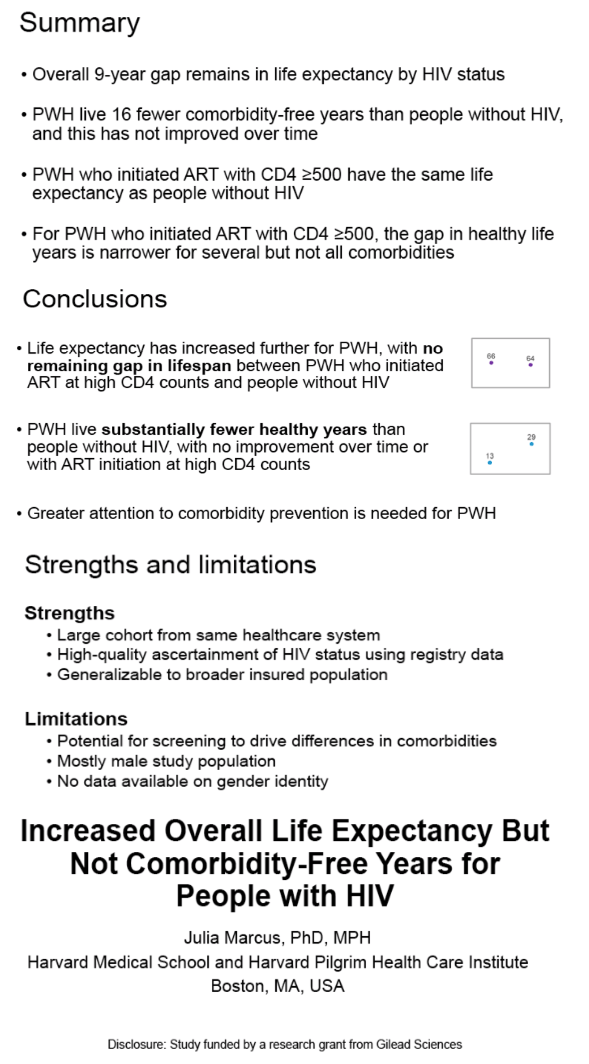
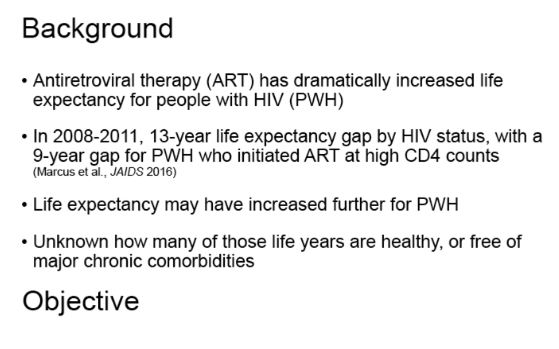
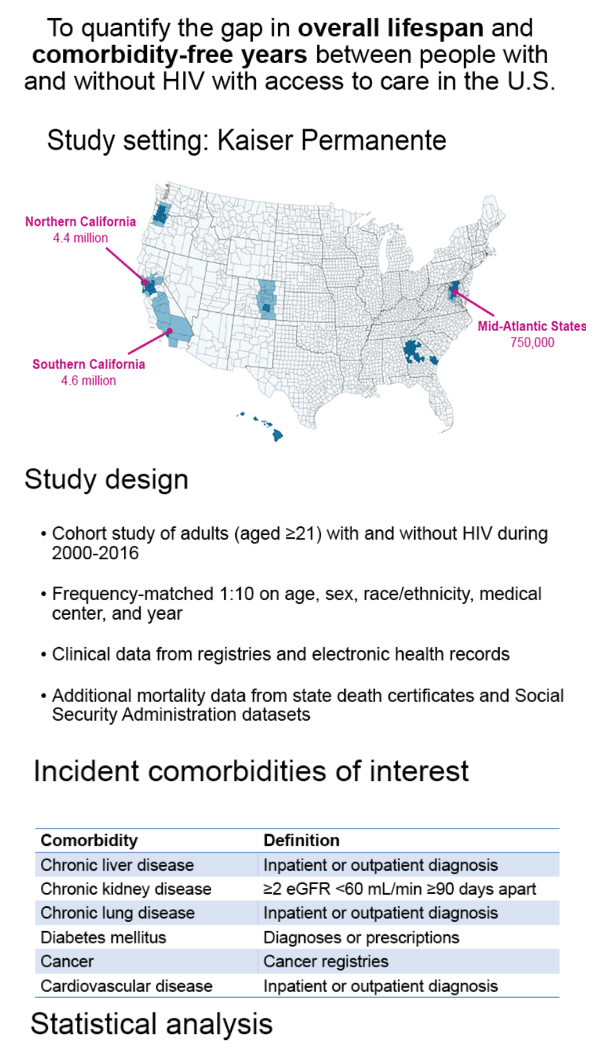
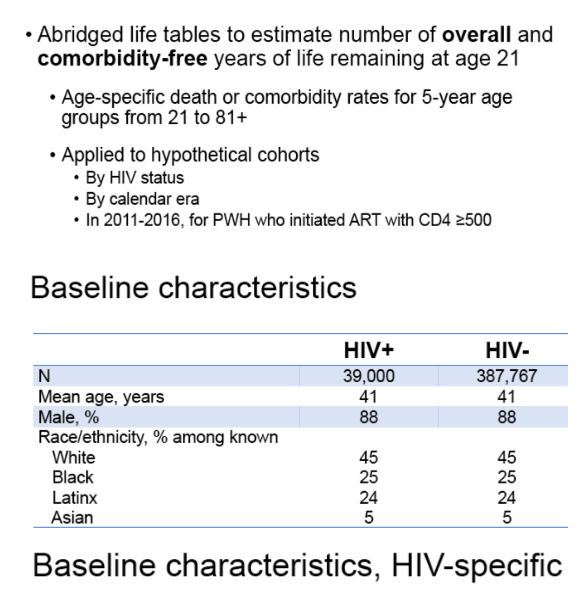

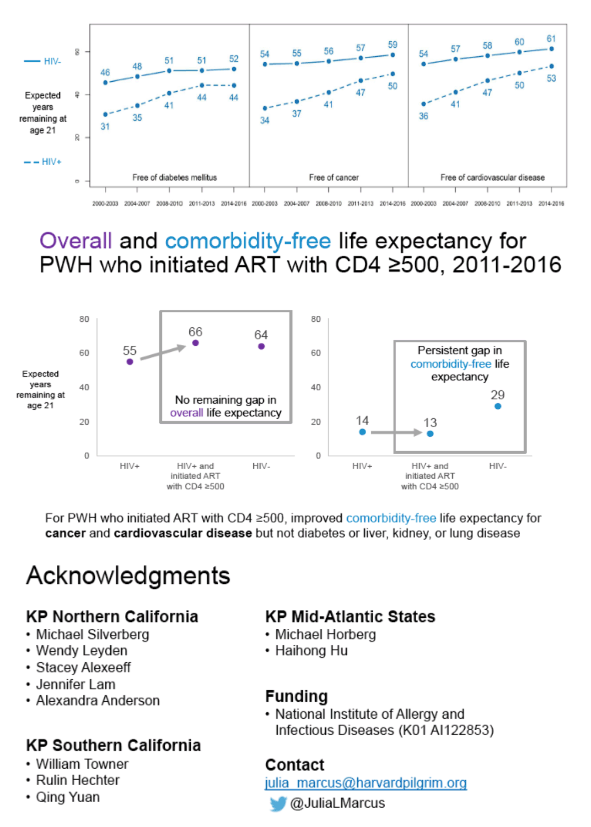
|
| |
|
 |
 |
|
|